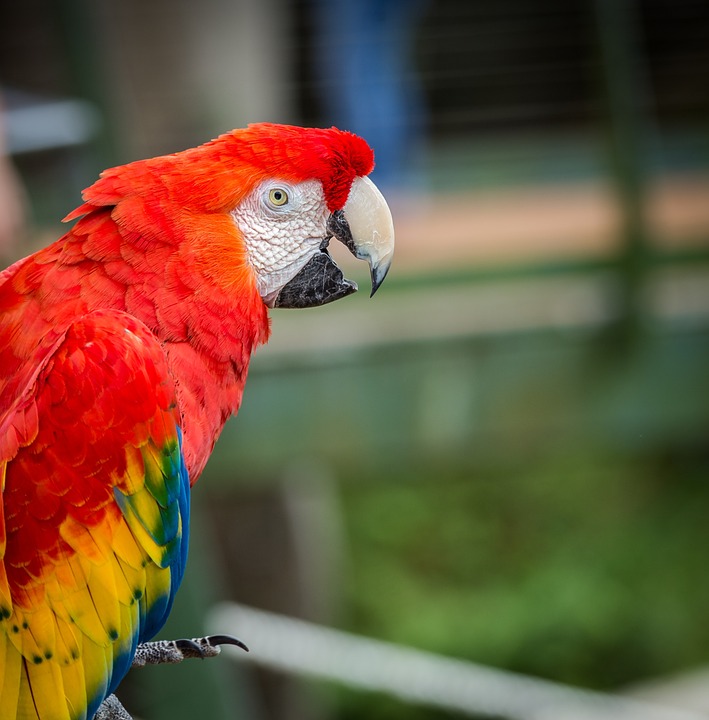Parrots are incredible creatures that can learn a wide range of tricks and behaviors. One popular trick that many parrot owners love to teach their feathered friends is how to wave or shake hands. This not only showcases their intelligence but also allows for a closer bond between you and your parrot. In this step-by-step guide, we will explore the process of teaching your parrot to wave or shake hands, as well as answer some frequently asked questions to make the training process as smooth as possible.
The first step in teaching your parrot to wave or shake hands is to establish trust and positive reinforcement. Spend quality time with your parrot, engaging in gentle interactions and rewarding them with treats or praise for good behavior. This will create a strong bond between you and your parrot, making the training process easier and more enjoyable.
Next, choose a specific cue that you will use to prompt your parrot to wave or shake hands. It can be a verbal command like “wave” or a hand gesture. Consistency is crucial, so make sure to use the same cue consistently throughout the training process.
Once you have established trust and chosen the cue, it’s time to introduce target training. Target training is a fundamental technique that can be used to teach your parrot a wide range of tricks. Start by introducing a small stick or target object, such as a dowel or a pen. Hold the target in front of your parrot, slightly out of reach. When your parrot shows any interest in touching or interacting with the target, reward them with a treat or praise. Repeat this process until your parrot consistently touches the target.
After your parrot is comfortable with target training, it’s time to associate the cue with the desired behavior. Present the target, give the cue (e.g., “wave”), and wait for your parrot to interact with the target. As soon as they do, reward them with a treat and praise. Repeat this step several times a day until your parrot starts connecting the cue with the behavior.
As your parrot begins to understand the association between the cue and the behavior, you can start shaping the action into a wave or a handshake. Gradually increase your criteria for reinforcement by rewarding your parrot when they touch the target in a way that resembles a wave or a handshake. For instance, if your parrot lifts its foot or wing, reward them with a treat and praise. Over time, shape the behavior until it closely resembles a wave or handshake.
Consistent practice is key to reinforcing the learned behavior. Set aside short training sessions daily, ensuring they are fun, engaging, and end on a positive note. Additionally, gradually introduce distractions and different environments to help your parrot generalize the behavior. Practice the wave or handshake trick in various settings to ensure your parrot can perform it regardless of the surroundings.
Now let’s address some frequently asked questions about teaching your parrot to wave or shake hands.
Q1: How long does it take to teach a parrot to wave or shake hands?
The time it takes to teach a parrot a new trick varies depending on the individual bird’s personality, previous training experiences, and the consistency of training. Some parrots may learn the wave or handshake trick within a few days, while others may take weeks or even months. Patience and consistency are key.
Q2: What rewards should I use during training?
Use small, healthy treats that your parrot finds enticing, such as pieces of fruits, vegetables, or their favorite seeds. Additionally, positive reinforcement through verbal praise, head scratches, or gentle petting can also serve as rewards.
Q3: Can any parrot learn to wave or shake hands?
Yes, most parrot species have the cognitive ability to learn the wave or handshake behavior. However, some individual parrots may show more aptitude or interest than others. It is essential to be patient and adapt the training techniques to suit your parrot’s unique personality and learning style.
Q4: What if my parrot refuses to learn or becomes disinterested during training?
Parrots, like humans, can have off days or may not always feel motivated to engage in training. If your parrot seems disinterested, take a break and try again later. Ensure the training sessions are short, engaging, and provide plenty of positive reinforcement. If the disinterest persists, it may be helpful to consult an avian behaviorist for further guidance.
Teaching your parrot to wave or shake hands can be an enjoyable and rewarding experience for both you and your feathered companion. Remember to be patient, consistent, and always prioritize positive reinforcement. With time and practice, you’ll be amazed at what your parrot can accomplish!









